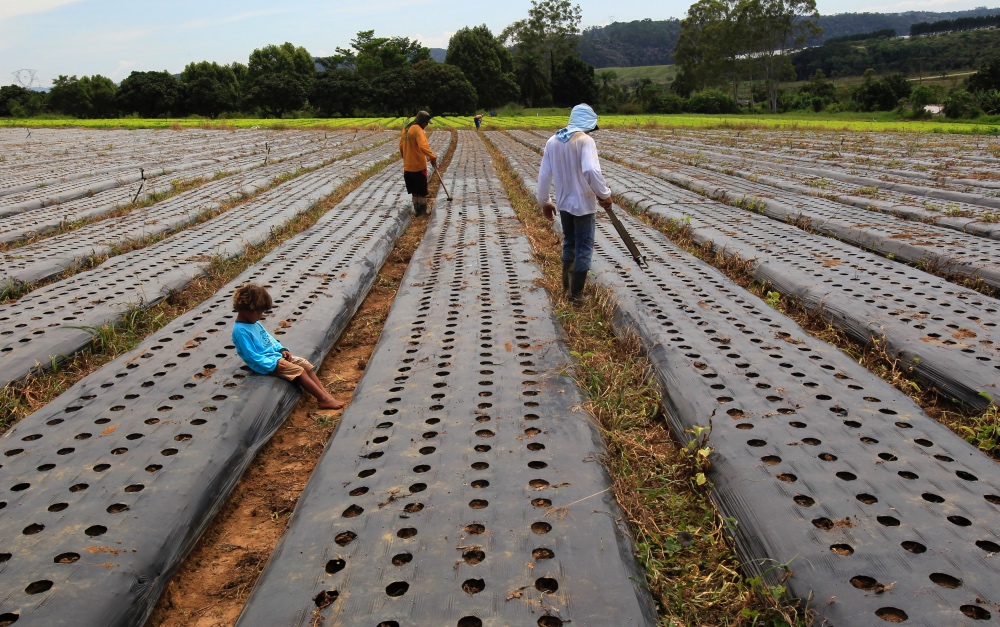Rio de Janeiro, Brazil
Thomson Reuters Foundation
Brazil will create a new “dirty list” of employers that engaged in modern slavery, drawn from a roster of companies and people found guilty in labour courts of the practice, officials said on Tuesday.
The move by the Labour Prosecutor’s Office is aimed at shedding more light on slave labour, which Brazil formally acknowledged in 1995 existed in the country.

Men work in a lettuce plantation north of Sao Paulo, on 10th February, 2011. PICTURE: Reuters/Paulo
The new list will stand along with a “dirty list” launched in 2004 which names employers deemed guilty by an internal government body. Companies on that list are blocked from receiving state loans and have restrictions placed on sales, and private banks use the list to gauge credit risk.
The new list is likely to name different companies and people, officials said.
“This is the great difference – it shows the other end of the process, where there is the judicial ruling,” said Ronaldo Fleury, labour prosecutor-general.
“The lists complement each other, as their databases are different,” he told Thomson Reuters Foundation.
The 2004 government-created list has been hailed by the United Nations as a key tool in Brazil’s anti-slavery drive.
Brazil’s effort to fight slave labour has included a special enforcement unit to find and raid sites suspected of using forced labour.
Since 1995, government agents have found more than 53,000 people toiling in slavery-like conditions.
The new list of employers found guilty of slave labour or human trafficking is due to be completed in about six months.
In Brazil, the executive and judicial branches of government are independent and can reach different conclusions, so names could appear on one list but not the other.
In Brazil slavery is defined as forced labour, but also includes debt bondage, degrading work conditions, long hours that pose a health risk or work that violates human dignity.
The coming months will be spent combing through thousands of court documents to see who to add, said labour prosecutor Rafael Gomes.
“It’s going to be a huge technological undertaking,” said Gomes, who helped design the list’s framework.
He said he expects names not on the current government “dirty list” may be added to the prosecutor’s one.
“There are a number of cases where the judiciary recognizes slave labour, but that you won’t find on the [government’s] list because it did not involve labour inspectors.”
The most recent existing list in April had about 186 names.
It recently came under scrutiny when major firms were found to have used legal means to avoid being put on it.
Both lists will be updated every six months, and companies will remain listed for a set number of years unless they reach a deal to pay reparations and improve labour conditions.
Anti-slavery campaigner Leonardo Sakamoto said he expects the new list to be shorter because the older list has cases involving labour inspectors who are involved in most rescue operations.
“The objective of the list is to complement the labour inspectors’ one,” he said.





